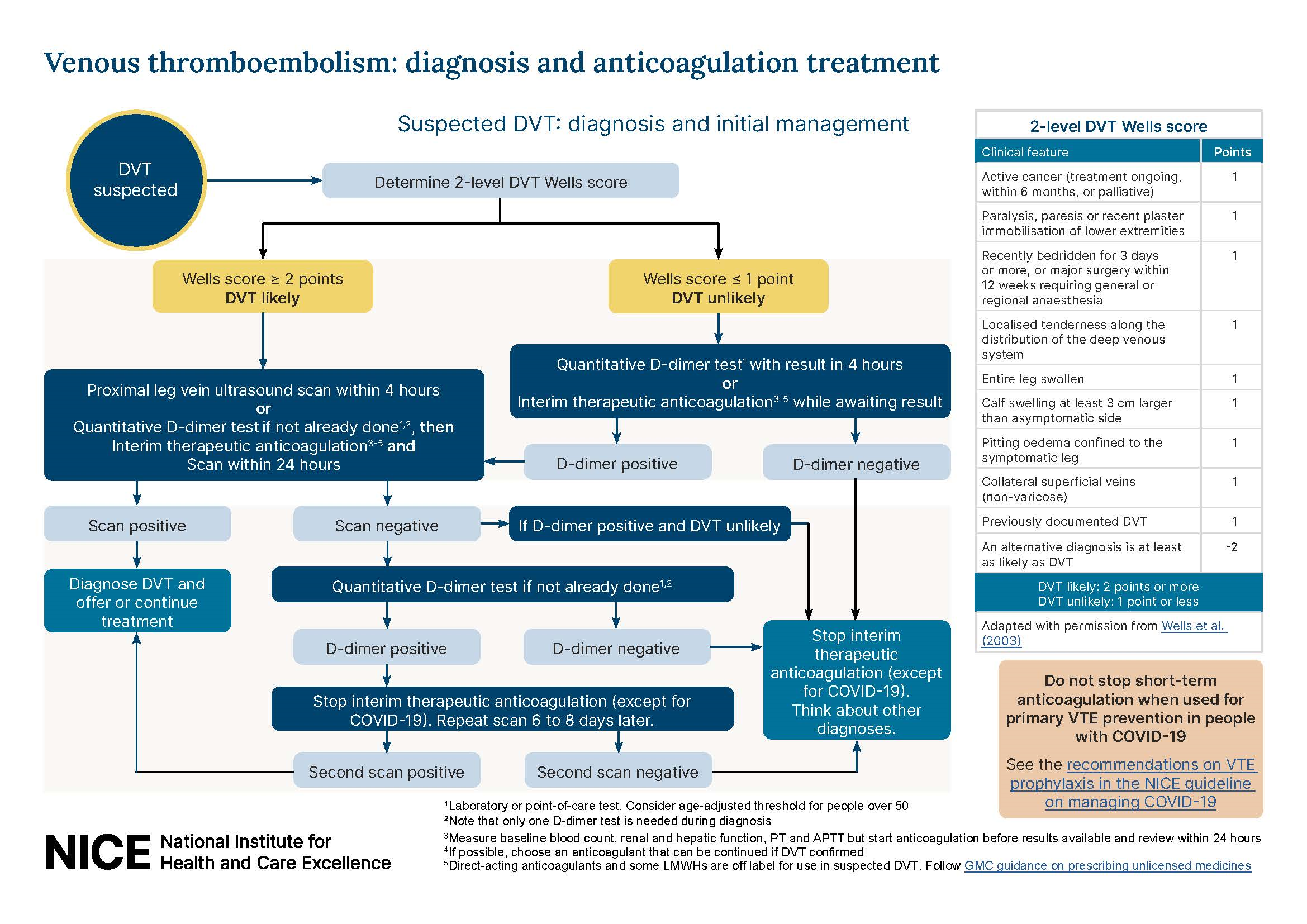Deep vein thrombosis, a subset of venous thromboembolism (VTE), occurs in normal veins, usually the deep calf veins of the leg and propagates more proximally (1).
- it may also affect other sites such as the upper limbs, intracranial and splanchnic veins (2)
- anatomically, it can be divided as
- proximal DVT
- involves popliteal vein and proximal veins
- around 80% of DVTs
- distal DVT
- involves calf vein and distal veins (3)
- the disease is often asymptomatic, but 1 per 1,000 people/year in the general population presents with clinical symptoms (2)
It is generally thought of as a complication of surgery or illness.
- surveillance data have revealed that the absolute risk of DVT in general medical patients is 10%-20% while it increases to 40%-80% in patients having hip surgery, knee surgery, or major trauma (4)
However, a number of situations predispose an individual to a deep vein thrombosis, and are encapsulated in Virchow's Triad (blood hypercoagulability, endothelial damage and venous stasis) (4).
The natural history is one of gradual breakdown of the thrombus with recanalisation. Damage to the valves may produce deep venous incompetence.
DVT is a usual precursor of both fatal PE and post-thrombotic syndrome (PTS) (4).

Reference:
- (1) Strijkers RH et al. Management of deep vein thrombosis and prevention of post-thrombotic syndrome. BMJ. 2011;343:d5916
- (2) Scottish Intercollegiate Guidelines Network (SIGN) 2010. Prevention and Management of Venous Thromboembolism.
- (3) Jenkins JS, Michael P. Deep Venous Thrombosis: An Interventionalist’s Approach. The Ochsner Journal. 2014;14(4):633-640.
- (4) Cayley WE Jr. Preventing deep vein thrombosis in hospital inpatients. BMJ. 2007;335(7611):147-51.
- (5)NICE (August 2023). Venous thromboembolic diseases: diagnosis, management and thrombophilia testing.
Related pages
Create an account to add page annotations
Add information to this page that would be handy to have on hand during a consultation, such as a web address or phone number. This information will always be displayed when you visit this page